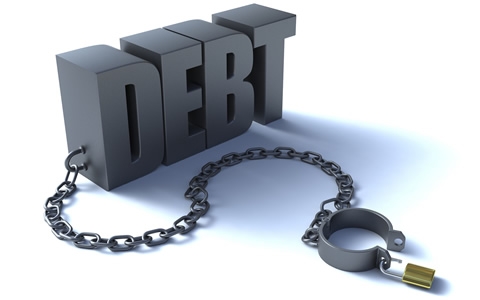
Latest figures from the Bank of Ghana (BoG) on Ghana’s total debt stock suggests that every Ghanaian, including new born babies, now owe three thousand three hundred and eighty seven cedis (GHS 3,387).
This figure shows a six hundred and eighty seven (GHS 687) cedis increase from last year’s two thousand seven hundred (GHS 2700) that each Ghanaian owed as at November 2014.
According to figures from BoG, which shows an increase in Ghana’s total debt stock by GHc5 billion more between May and June 2015, the country’s total debt stock now stands at GHc94.5 billion, representing 70.9% of Gross Domestic Product (GDP).
With the Ghana Statistical Service’s current estimation of Ghana’s population at 27. 9 million people, a division of the population figure by the aforementioned public debt (GH¢ 94.5 bn), means that every Ghanaian currently owes GH¢3,387 to the country’s creditors both internally and externally as of July this year.
In 2009, every Ghanaian was indebted to the tune of GH¢380 as the total public debt stock at that time stood at GH¢9.5 billion.
This means that from 2009 to date, an additional amount of three thousand and seven (GHS 3007) cedis has been added to the total debt stock owed by every Ghanaian including new born babies.
Ghana’s total public debt in the first half of the year has increased consistently by about GHc15.1 billion, growing from GHc79.4 billion in January, to GHc94.5 billion in June.
An International Monetary Fund (IMF) report, after reviewing Ghana’s performance under the Extended Credit Facility program, indicated that Ghana’s total public debt had now exceeded pre-HIPC levels.
This IMF indication raised public debate on whether current economic challenges had sent Ghana back to its 2001 HIPC state. However, honourable Seth Terkper has allayed such fears, assuring Ghanaians that the country’s debt stock was backed by strong infrastructural projects that have the capacity to refinance loans acquired by government since 2012.
HIPC
The Finance Minister explaining why Ghana was nowhere near its past HIPC status said, in 2001, Ghana’s debt stock was over 180 percent and demanded an aggressive approach since the real sectors of the economy were under pressure then.
“This time our debt is invested in social and commercial projects that can pay for themselves”, Mr. Terpker explained in a lecture at the University of Ghana Business School.
Meanwhile, the IMF is projecting Ghana to end 2015 with a 75% debt-to-GDP ratio.
Ghana’s total public debt in the first half of the year has increased consistently by about GHc15.1 billion, growing from GHc79.4 billion in January, to GHc94.5 billion in June.




























